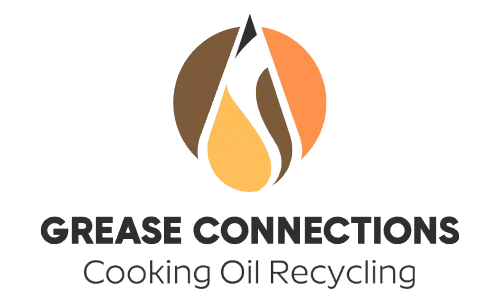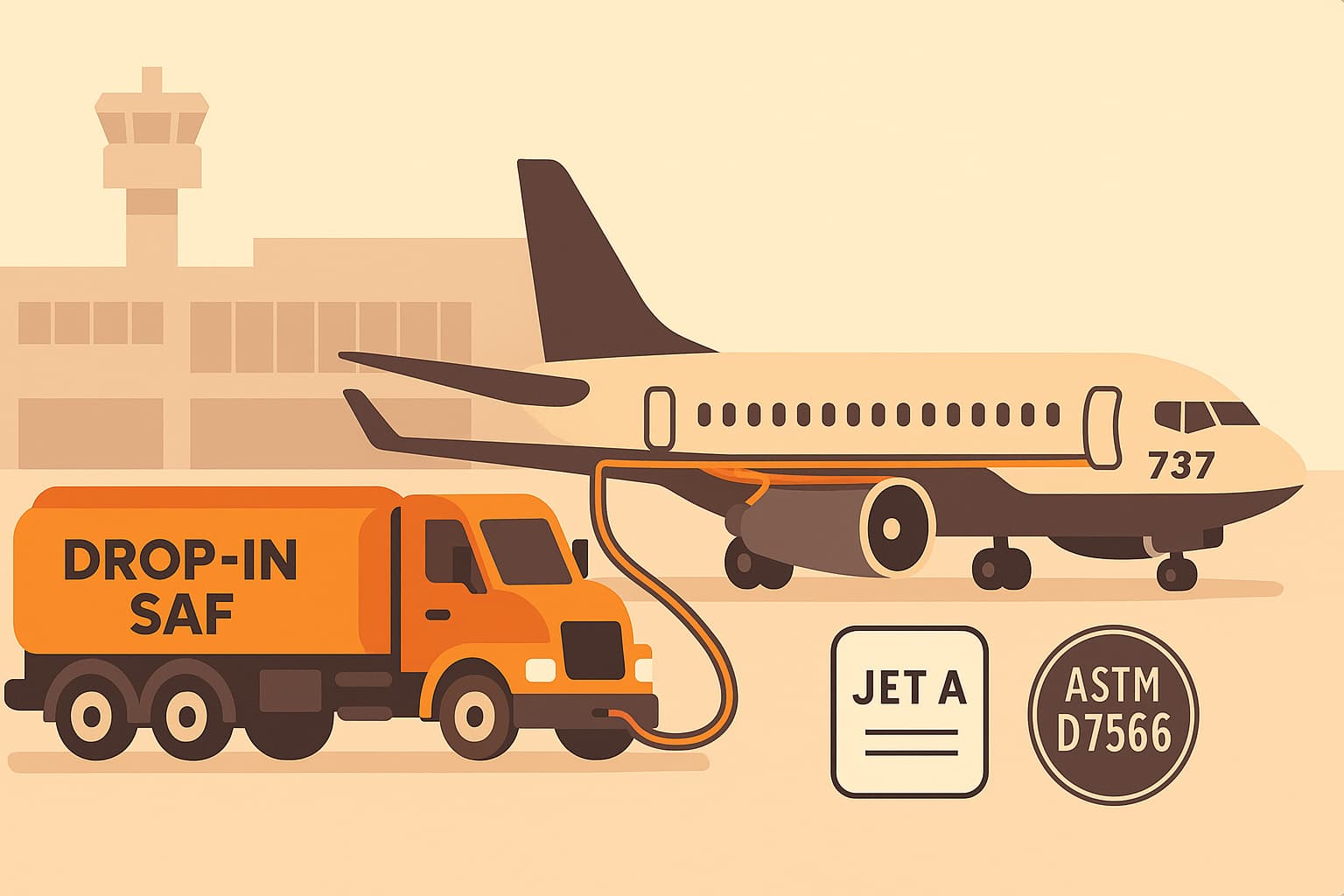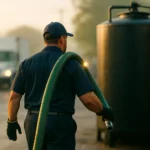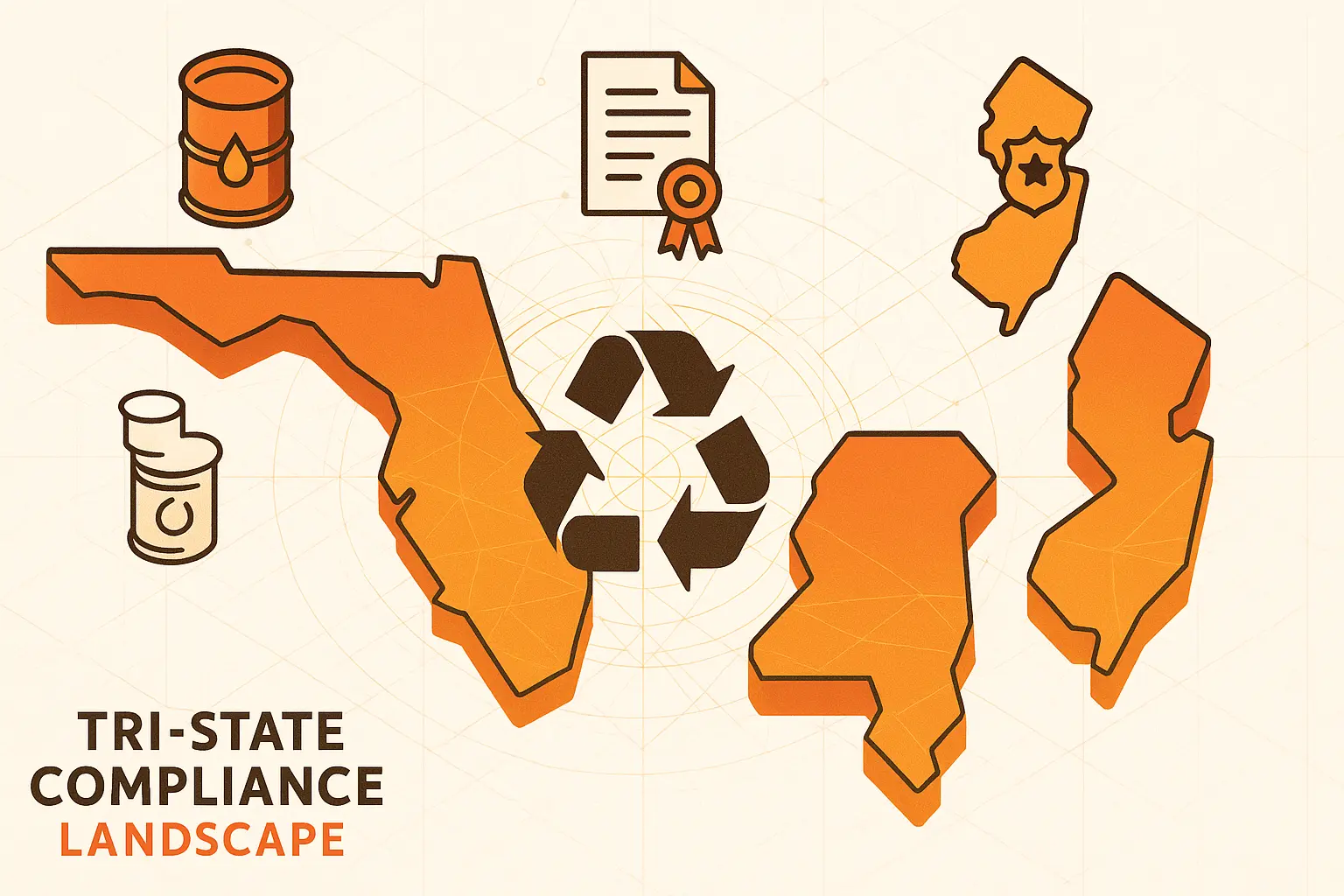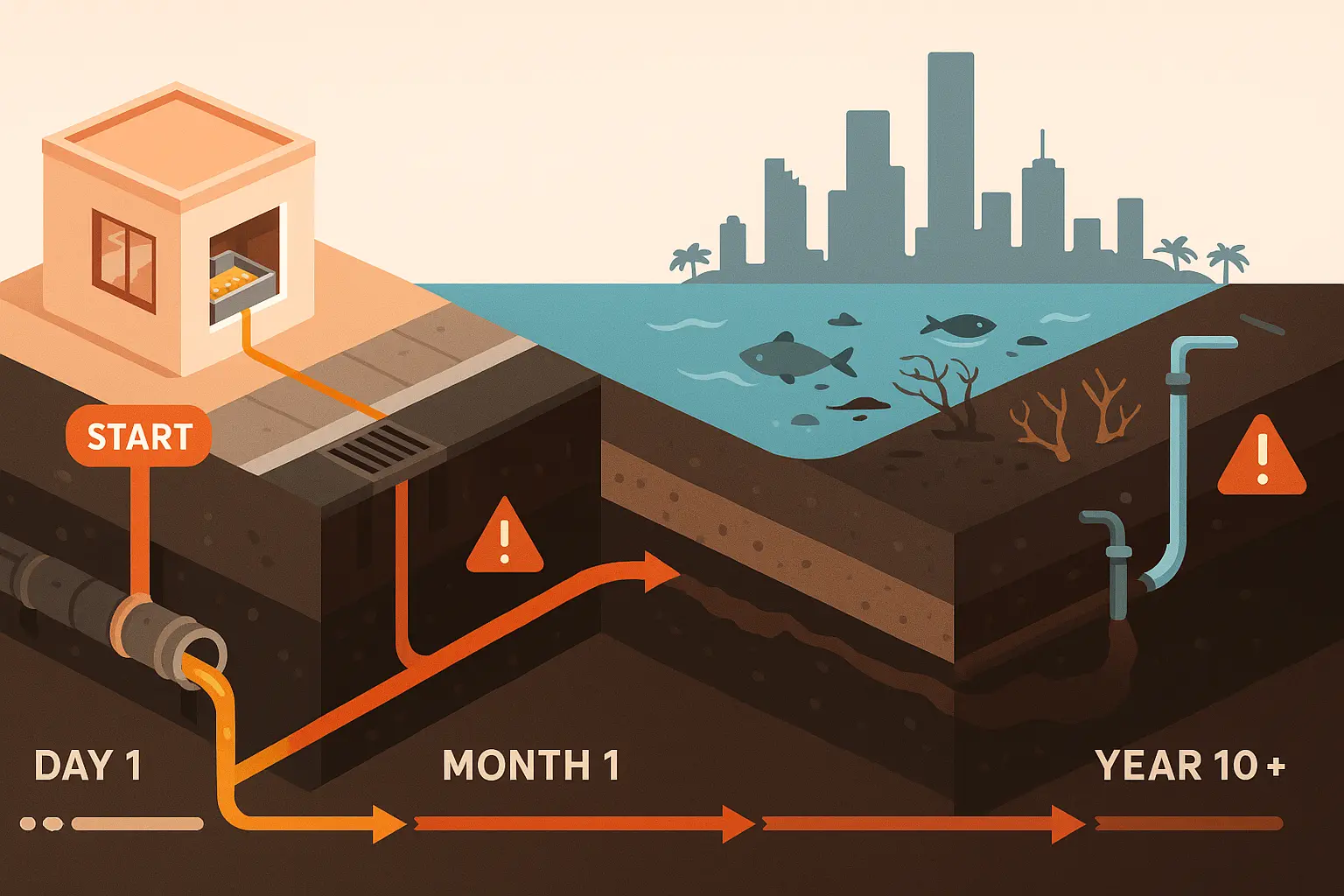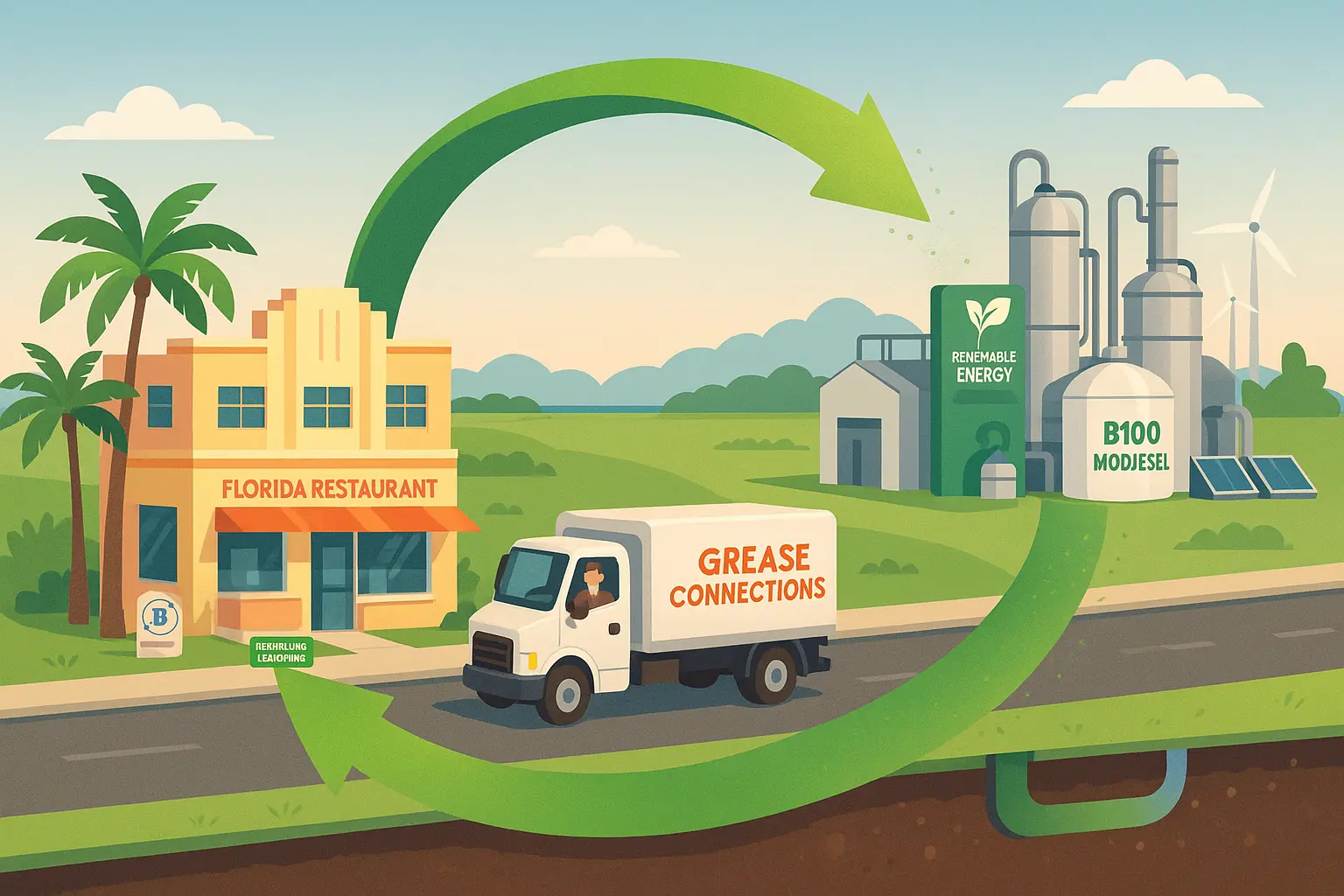Table of Contents
The Drop In Promise: SAF That Fits Today’s Fleet
“Drop in sustainable aviation fuel” is a liquid hydrocarbon that meets jet fuel density and freezing point requirements, so it can flow through the same pipelines, hydrant trucks, and engines as Jet A today. The U.S. Department of Energy notes that when SAF is blended per ASTM rules it “can be used in existing aircraft and infrastructure,” eliminating segregation headaches at airports.
That direct compatibility, often called SAF compatibility, means airlines avoid the capital bills that grounded alternative fuel projects in the past. Because the molecule is almost identical to kerosene, jet engine compatibility SAF testing focuses only on long term seal performance rather than redesigning combustors. For decision makers, the headline is simple: drop in biofuel keeps the hardware you already paid for.
100 % SAF Flights Are No Longer Theory
In November 2023 Virgin Atlantic crossed the Atlantic on a Boeing 787 powered entirely by SAF, proving can planes fly on 100 % SAF is no longer a hypothetical. Rolls Royce had already completed a full engine certification campaign days earlier, showing every Trent series civil engine can run on neat SAF without performance loss. Academic teams monitored the flight and found no adverse contrail or particulate effects, removing the last technical objection.
These milestones demonstrate that the 50 % blend ceiling in today’s specification is a paperwork barrier, not a materials one, a critical message for airlines writing 2030 decarbonization road maps.
Inside ASTM D7566: The Rulebook for Drop In Biofuel
The backbone of sustainable aviation fuel specifications is ASTM D7566, which “covers the manufacture of aviation turbine fuel that consists of conventional and synthetic blending components” and automatically recertifies compliant batches as standard Jet A under ASTM D1655 once released.
Seven annexes list approved pathways; five allow 50 % blends and two allow 10 %. Because the spec piggybacks on the existing jet fuel standard, refiners, depots, and airports need no new test equipment to accept SAF. That regulatory design is the quiet enabler of rapid adoption.
| Approved Pathway | Feedstock Example | Max Blend % | Notes |
|---|---|---|---|
| HEFA SPK | used cooking oil | 50 % | Commercially dominant |
| FT SPK | municipal solid waste | 50 % | Gasification route |
| ATJ SPK | ethanol | 50 % | Emerging Midwest plants |
| SIP | sugarcane | 10 % | High energy density |
| CHJ | camelina oil | 50 % | High cold flow margin |
Table adapted from DOE pathway summary
Engines & Airports: Zero Modifications, Big Savings
Fuel pumps, seals, and combustors see SAF as ordinary kerosene, so SAF aircraft modifications are limited to software updates for fuel quality tracking; no hardware swaps are required.
At the airport, blended SAF certified to ASTM D1655 is stored in common tanks, drawn through the same hydrant network, and priced on existing into plane contracts. For facility managers this means no new tanks, no new hoses, and, crucially, no downtime. That operational continuity is why airlines are comfortable signing offtake agreements that stretch a decade or more.
From Fryer to Flight Deck: Cooking Oil SAF and Your Bottom Line
For restaurants, the fryer barrel is suddenly part of aviation’s carbon strategy. The HEFA pathway turns waste fats and used cooking oil into a hydrogenated paraffinic jet fuel that meets ASTM D7566 Annex A2 at 50 % blend. DOE’s Grand Challenge Roadmap predicts lipids, principally fryer oil and grease, will supply the lion’s share of U.S. SAF through 2030.
Partnering with a reliable used collection company boosts fuel security for airlines and delivers new revenue streams to kitchens without extra effort. In practical terms, yesterday’s waste oil invoice becomes tomorrow’s aviation grade product, closing a circular economy loop that regulators love and travelers notice.
Performance & Emissions: SAF vs Conventional Jet Fuel
Lifecycle studies show neat SAF cuts CO₂ by up to 80 %, and blends meeting current limits still deliver a 50 %+ reduction, the threshold required for federal tax credits. Wired’s field report on United’s cooking oil test flight found a 70 % smaller carbon footprint while cockpit instrumentation registered identical thrust and fuel flow readings.
For airlines, the equation “less carbon, same range” eliminates trade offs, and for regulators it positions SAF vs conventional jet fuel as a clear climate win without operational compromises.
Logistics & Supply Chain: Moving SAF Through Existing Fuel Farms
An ICAO logistics review confirms that once certified, blended SAF “can be stored in general fuel storage tanks with minimal infrastructure modifications” and delivered by the same pipelines, railcars, and trucks that already criss cross the United States. All ten of the nation’s largest airports are on major jet fuel pipelines, so drop in batches slide straight into high volume hubs; smaller fields receive drum or railcar loads along existing freight corridors. In other words, distribution is a paperwork exercise, not an engineering project, which accelerates market penetration.
Economics & Policy Tailwinds: The U.S. SAF Grand Challenge
Federal policy now backs demand with supply side incentives. The SAF Grand Challenge calls for 3 billion gallons annually by 2030 and 35 billion by 2050, enough to cover total U.S. jet fuel demand.
Tax credits under 45Z reward fuels meeting the 50 % lifecycle reduction benchmark, while state low carbon fuel standards stack additional value. Reuters notes that these incentives have already tripled announced U.S. production capacity for 2024, though volumes still equal only 0.5 % of demand, a growth gap presenting opportunity for early movers.
Practical Checklist: Starting a SAF Program Today
- Confirm your fuel supplier’s ASTM D7566 certificate number and blend ratio.
- Amend into plane contracts to accept certified SAF volumes.
- Update fuel quality software to flag SAF batches for reporting.
- Coordinate with a regional used oil collection partner, for instance [link: Miami used cooking oil collection], to secure local HEFA feedstock.
- Publish the emissions delta in your annual ESG report to capture policy credits.
Minimal checklist provided for operations; steps are sequential sentences, not bullet points, for screen reader ease.
